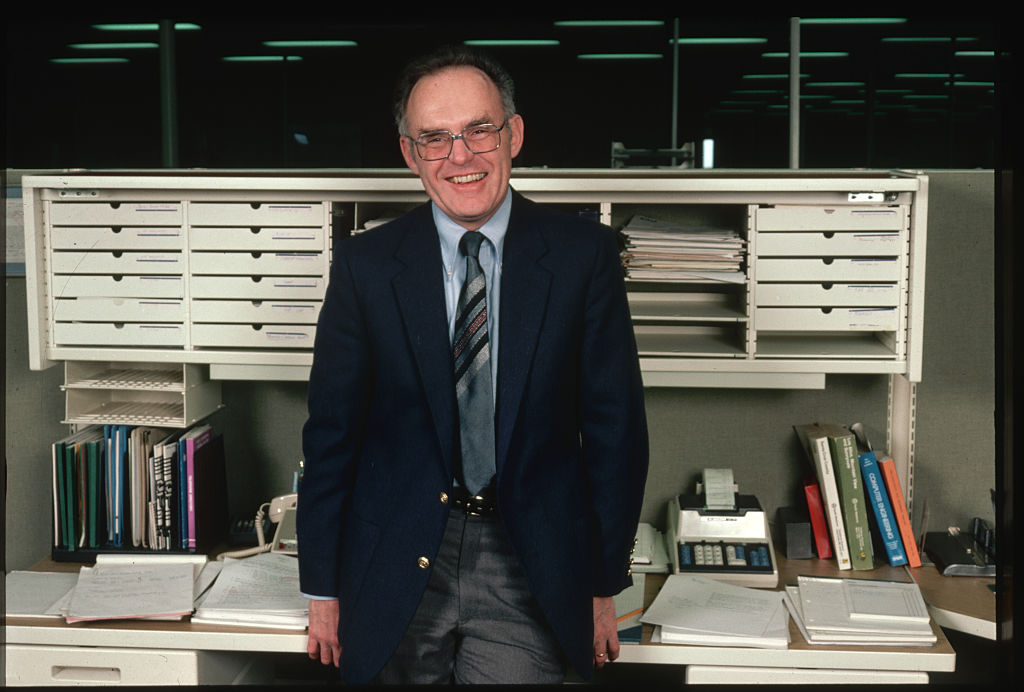The Left’s war on nature is integral to its larger project.
Requiem for an Era in Silicon Valley

Gordon Moore was the last of the great twentieth century American innovators.
Gordon Moore, formulator of “Moore’s Law,” co-founder of both Intel and Fairchild Semiconductor, and one of the original titans of Silicon Valley, died last week at the age of 94, symbolically signaling the end to an era of computing and of America’s technological spirit, a time when young pioneering engineering geniuses, mostly from middle America (though sprinkled with immigrants from Europe), gave birth to what became the world’s center for technological innovation.
In many ways, Moore was the last titan of Old Silicon Valley, the home of a certain kind of empirically minded, engineering-focused Republican. It is easy to forget, looking at today’s uber-liberal Bay Area, that the heart of the Valley was represented by Republican Tom Campbell in Congress as late as 2000, and that Campbell followed in the footsteps of several other Republicans who represented the region in Congress, some of whom had direct connections to the Valley’s earliest innovators.
And unlike today’s entrepreneurs, many of whom grew up among the elite technocrats, or with ambitions to join them, Moore’s beginnings, as with many of his colleagues, were far more modest. Moore’s father was a deputy sheriff in what was then a very rural San Mateo County, and his mother’s family ran a general store. He originally enrolled at San Jose State College, a commuter school, before eventually transferring to Berkeley. But his natural talent for science and engineering would eventually lead him to a Ph.D. at Caltech and launch him to fame and fortune; at its peak, his net worth stood at $25 billion. A lifelong Republican and a conservative in the original sense, Moore was an avid fisherman dismayed by the loss of open space in Silicon Valley as it developed. His environmentalism was more in line with New Right sensibilities than the corporate extractivism of the GOP establishment.
But Moore is perhaps best known for “Moore’s Law”—his 1965 observation that the number of transistors that could be put in an integrated circuit doubles approximately every two years. (Moore’s prediction was not based on a physical law; it was simply a generally accurate prediction based on history from his own days as an innovator.) The implication of this projection is that computing power would increase exponentially at the same rate, at least for the next several decades. Computers would become smaller, cheaper, and faster almost more quickly than designers and developers would know how to use them. Eventually, it was noted, a room-sized computer of the sixties would be replaced by a desktop machine and then ultimately by a little slab we carry in our pockets. The unfolding of Moore’s Law would see chips that cost $150 per transistor in the mid-sixties to $10 per millions of transistors today.
For those of us involved in the earliest days of the Web, Moore’s Law was a totem that implied the potential for an almost infinite and, most important, rapid increase in technological capability, and the idea that the tools we used today—which seemed primitive—would eventually, with the continued growth of more and more powerful and compact processors, become revolutionary. Other technological visionaries in other domains, from graphics to AI, would use Moore’s insight to plot the future of innovation in their own fields.
Moore was the last surviving member of the “Traitorous Eight” who founded Fairchild Semiconductor in 1956 and who were widely seen as the founders of Silicon Valley. Before Fairchild, Moore and the rest of the Traitorous Eight had worked at Shockley Semiconductor—founded by his fellow Caltech alumnus and Nobel Laureate William Shockley. At Shockley, Fairchild, and Intel, Moore’s innovations were central contributions in developing the integrated circuit and, subsequently, the modern silicon-based computer chip. It was Fairchild’s work with silicon as a medium that put the “silicon” in Silicon Valley.
Shockley was notoriously difficult to work with. In later life, he would become notorious for his prominent advocacy of eugenics and controversial research in race and intelligence, a discussion that made Shockley politically toxic even in the far less politically correct Valley of his day. The edgiest neo-reactionary’s hottest takes would pale in comparison to statements that Shockley made forthrightly on television.
As might be gathered from the above, Shockley, for all his brilliance, was not the sort who played well with others—“maybe the worst manager in the history of electronics,” according to his biographer—and the brilliant engineers he hired, including Moore, felt he was hindering their ability to innovate. Their discontent caused the rupture that would eventually transform the world.
In his later years, Moore was a generous philanthropist, donating over $600 million to Caltech alone; it is notable that Caltech is perhaps the only major research university that admits students on pure academic merit, without regard for matters of diversity. In addition, Moore funded countless other programs, primarily in science and engineering, at other institutions. He believed in the old models of American innovation and basic science, often dismissed by today’s entrepreneurs, and he worried about America’s loss of standing in this area. In 2015, Moore said, “I’m disappointed that the federal government seems to be decreasing its support of basic research. That’s really where these ideas get started. They take a long time to germinate, but eventually they lead to some marvelous advances…and our position in the world of fundamental science has deteriorated pretty badly.”
Yet for all the doom and gloom that the Right engages in (not without reason) regarding technology, throughout his life Moore remained an optimist, a lesson for all of us as we attempt to solve profound problems of governance in the digital age. He appreciated the new possibilities that technology offered rather than simply lamenting the things we had lost.
As Moore would say late in life, “I’d love to come back 100 years from now and see what had happened in the meantime. We’re living in just a fantastic time period.”
The American Mind presents a range of perspectives. Views are writers’ own and do not necessarily represent those of The Claremont Institute.
The American Mind is a publication of the Claremont Institute, a non-profit 501(c)(3) organization, dedicated to restoring the principles of the American Founding to their rightful, preeminent authority in our national life. Interested in supporting our work? Gifts to the Claremont Institute are tax-deductible.
Excerpt from "Fifty Years Hence"
Time travel of every kind is madness.
In real life, trade-offs abound.
We’re the ones to decide on whom we should rely.
A fresh lesson in the un-American cost of chilling online political speech.






